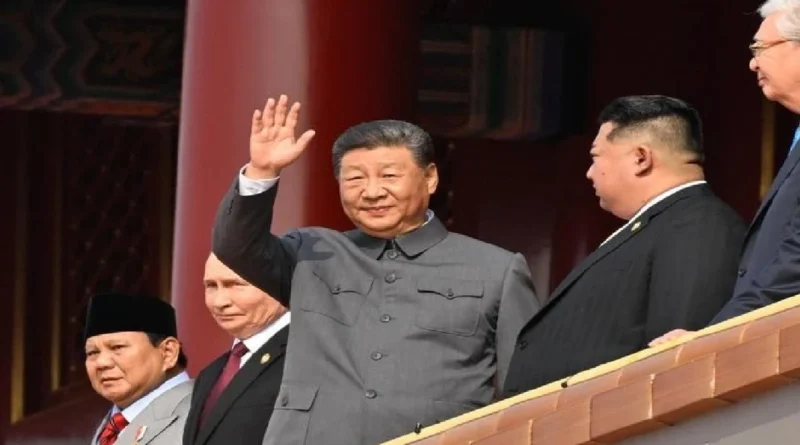From “Art of the Deal” to “Art of War”: Xi Jinping’s Grand Military Parade Sends a Global Message
“The real thrill is in playing the game. I don’t spend too much time worrying about what I should have done differently—or what’s going to happen next.”
– Donald Trump, The Art of the Deal (1987)
Though written in 1987, Donald Trump often claims his book The Art of the Deal is second only to the Bible in terms of sacred wisdom. He believes—blindly, as he says—that its teachings are timeless truths, urging his followers to do the same. But while Trump may have mastered the “art of the deal,” the “art of war” was written by a Chinese strategist more than 2,500 years ago—a fact that resonates deeply in today’s shifting global landscape.
That book, The Art of War by Sun Tzu, is a 13-chapter classic on military science, strategy, and philosophy—still considered relevant not just in warfare but across various fields.
China’s Challenge to U.S. Global Dominance
The United States remains the world’s most powerful nation, but its dominance is now increasingly challenged by China, especially in Asia. In a striking display of growing military and diplomatic clout, China hosted one of the largest military parades in its history.
Wearing a Mao-style suit, President Xi Jinping delivered a speech before the parade, emphasizing:
“The world runs on harmony, not hegemony. China is not afraid of anyone. We all live on the same planet and must work together peacefully.”
He called on the People’s Liberation Army (PLA) to transform into a world-class military force, laying out an ambitious vision for China’s global role.
The 70-minute parade was attended by senior Chinese Communist Party officials and over 20 international leaders, including those from Indonesia, Vietnam, Malaysia, Pakistan, Belarus, Iran, Serbia, and Slovakia.
Notably, Russian President Vladimir Putin and North Korean leader Kim Jong-un were also present—leading most European leaders to decline their invitations in protest.
A Strategic Photo Op and a Stronger Message
Before the parade began, Xi greeted Putin, Kim, and other foreign leaders, engaged in brief conversations with them, and posed for a group photo, symbolizing China’s central role in a new global alignment.
This grand spectacle was widely interpreted as an effort by China’s ruling Communist Party to rally nationalist sentiment amid economic concerns and rising U.S.-China tensions.
The event strongly highlighted China’s role in defeating Japanese aggression during World War II, though the historical role of the Communist Party remains contested. Many historians argue that Chinese nationalist forces—which later fled to Taiwan—played a more significant role in defeating Tokyo.
Nonetheless, Xi used the occasion to cast Beijing as a pillar of the international community, signaling that China is ready to lead in a multipolar world.
Xi’s Global Vision vs. Trump’s Unilateralism
Experts suggest the event was, from Xi Jinping’s perspective, a resounding success.
Wen-Ti Sung of the Atlantic Council observed:
“Xi is confident that the global balance has shifted. China is back in the leadership seat.”
“It’s not China’s so-called ‘wolf warrior’ diplomacy, but rather Trumpian unilateralism that has become the primary source of global uncertainty.”
Sung pointed to recent meetings at the White House, where European leaders united not to support the U.S., but to protect Ukrainian President Volodymyr Zelensky—reflecting broader concerns about a second Trump presidency and the unpredictability it could bring.
Stay updated with International News in Hindi on Prabhasakshi

